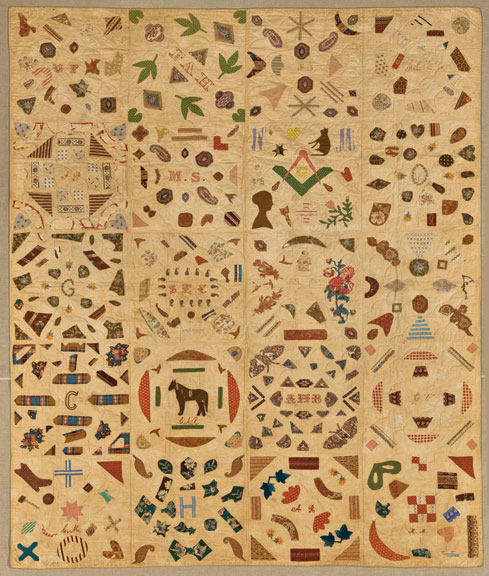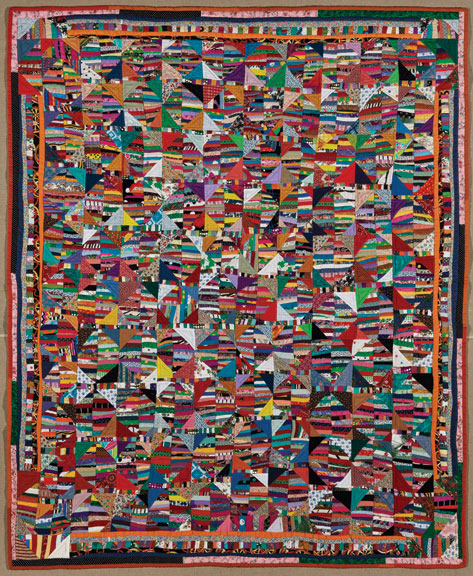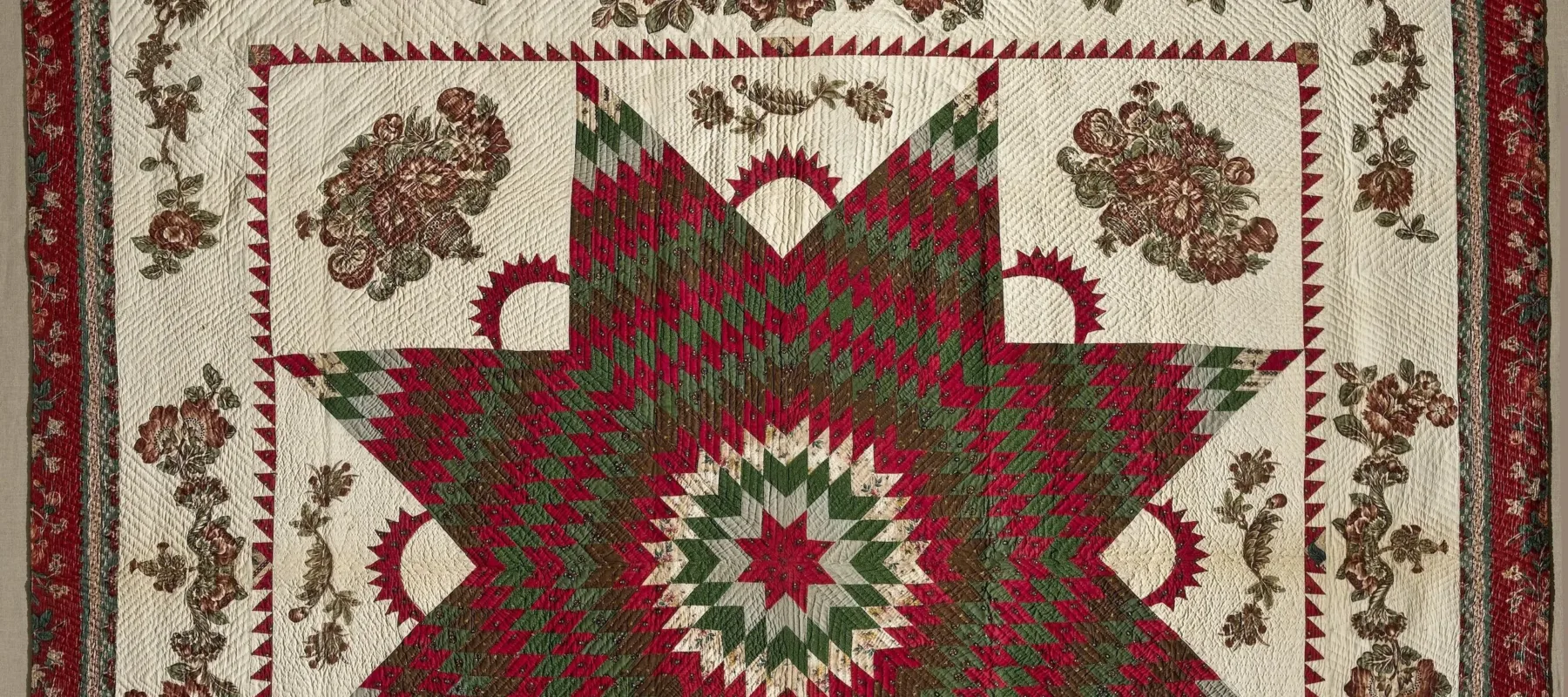In Quilts as Women’s Art: A Quilt Poetics, quilter and activist Radka Donnell discusses an organizational feature of the quilt—its “grid”—which she defines as the element that is “not locking but only tentatively ordering the whole by calibrating the unlike into a fascinating puzzle action.” She explains that the grid can function either as a “diagnostic aid” or as a starting point for the visual effects of the surface design.

“Workt by Hand” features a variety of quilts demonstrating the range of craftsmanship, creativity, and vision of the women who created them. Still, many of these quilts are tied together by the concept of the grid. Some quilts have, as Donnell states, more physical depictions of gridlines and separations. For example, at first glance the Pictorial Quilt, 1840, may seem like a mere conglomeration of symbols and pictures, but it does not take long to notice clearly-stitched delineations between the twenty different blocks. Therefore, the grid in this quilt acts as an integrating device that brings otherwise irregular objects into a regular scheme.
Even quilts with seemingly haphazard patterns, such as crazy quilts, still have an underlying visual order. Anna Williams’s Quilt, 1995, creates the essence of a grid instead of emphasizing the stitching together of separate blocks. Williams improvises as well as uses traditional block settings, giving the grid a slightly different function—it is not simply an integrating device, but an arrangement of geometric play.

Since it is not as standardized and obvious as the grid laid out in the Pictorial Quilt, this arrangement amplifies the viewer’s desire to find structure in chaos. Donnell compares this experience to interpreting poetry, where one must reach a compromise between the established regularities of language and the irregularities of individual existence and emotion.
Despite their variety and their disparate origins, the other quilts on view in “Workt by Hand” similarly use the concept of the grid in nuanced and interesting ways. Though the quilt grid is flexible enough to be personalized, the examples all show their makers’ use of its underlying structure as a common thread.
